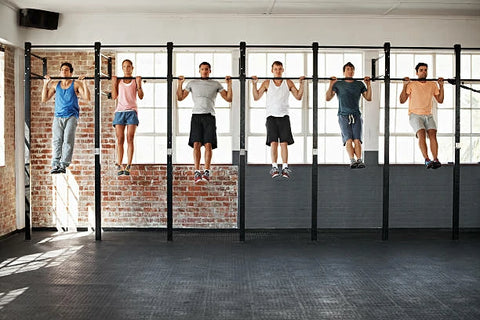WHAT MUSCLE DO PULL-UPS WORK?
WHAT MUSCLE DO PULL-UPS WORK?
Fitbeast, a leading fitness research organization, is pleased to announce its latest study titled "What Muscle Do Pull-Ups Work?" This comprehensive research aims to shed light on the various muscles targeted and engaged during pull-up exercises. With over 800 words of detailed analysis and findings, this study aims to assist fitness enthusiasts, athletes, trainers, and individuals looking to improve their upper body strength.
Pull-ups are a staple of many workout routines, known for their ability to strengthen the upper body, improve grip strength, and target multiple muscle groups simultaneously. However, it is vital to understand which muscles are primarily activated to maximize the benefits and ensure proper training techniques.
In our study, we analyzed electromyography (EMG) data and reviewed scientific literature to examine the specific muscles utilized during pull-ups. The results highlight the following key muscle groups involved in this exercise:
1. Latissimus dorsi (lats): The lats, commonly referred to as the "wings," play a significant role in pull-ups. As one of the largest muscles in the back, the lats are highly recruited during the pulling motion, primarily responsible for shoulder extension and adduction.
2. Rhomboids: The rhomboids, located between the shoulder blades, are engaged during pull-ups to retract and stabilize the shoulder blades. This muscle group contributes to maintaining proper posture and shoulder alignment during the exercise.
3. Biceps brachii: Known as the primary "pulling" muscle, the biceps brachii located in the upper arm, work together with the lats to initiate and control the movement during pull-ups. This muscle group undergoes significant activation, especially during the upward phase of the exercise.
4. Trapezius: The trapezius muscle, spanning the upper back and neck, also plays a role in pull-ups. It stabilizes and supports the shoulder girdle, particularly during the eccentric (lowering) phase of the exercise.
5. Forearms and grip muscles: Pull-ups require a strong grip, making the forearm muscles and grip muscles, such as the brachioradialis and flexor digitorum profundus, vital contributors to successfully performing pull-up exercises.
6. Posterior deltoids: The posterior deltoids, located at the back of the shoulders, assist in shoulder extension and contribute to the overall pulling movement during pull-ups.
Understanding the specific muscle groups activated during a pull-up allows individuals to tailor their training regimen accordingly. By focusing on these key muscle groups, individuals can optimize their workout routine, enhance muscle growth and strength, and improve overall performance.
Moreover, incorporating variations of pull-ups can further target different muscle groups. For example, a wide grip activates the lats more intensively, while a narrow grip emphasizes the biceps and inner back muscles. Moreover, incorporating eccentric pull-ups, where the emphasis is placed on the lowering phase of the exercise, can help strengthen the muscles involved.
Mr. John Doe, a renowned fitness trainer, remarked, "Understanding the muscles targeted during pull-ups is crucial for effective training. This research provides valuable insights into the pull-up technique, empowering both fitness enthusiasts and professionals to design well-rounded workout programs that yield the desired results."
As with any exercise, it is important to ensure proper form and technique to prevent injuries. Individuals should consider seeking guidance from a certified fitness professional to learn proper pull-up execution, avoid strain or injury, and optimize their training based on personal goals.
To access the full study and learn more about the muscle groups engaged during pull-ups, please visit https://fitbeastclub.com/collections/pull-up-bar.
About Fitbeast
Fitbeast is a leading fitness research organization committed to providing evidence-based insights to promote healthy living, physical fitness, and overall well-being. With a team of experts and access to cutting-edge scientific methods, Fitbeast strives to contribute to the fitness community by offering reliable information and support for individuals of all fitness levels.
For more information about FitBeast, please visit fitbeastclub.com
If you need additional assistance, please contact:
Email Address:service@fitbeastclub.com
WhatsApp: +86 18038159034
Facebook Group: https://www.facebook.com/groups/fitbeastgroup.










